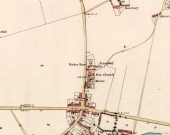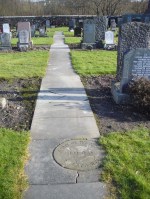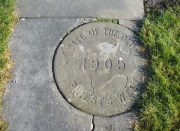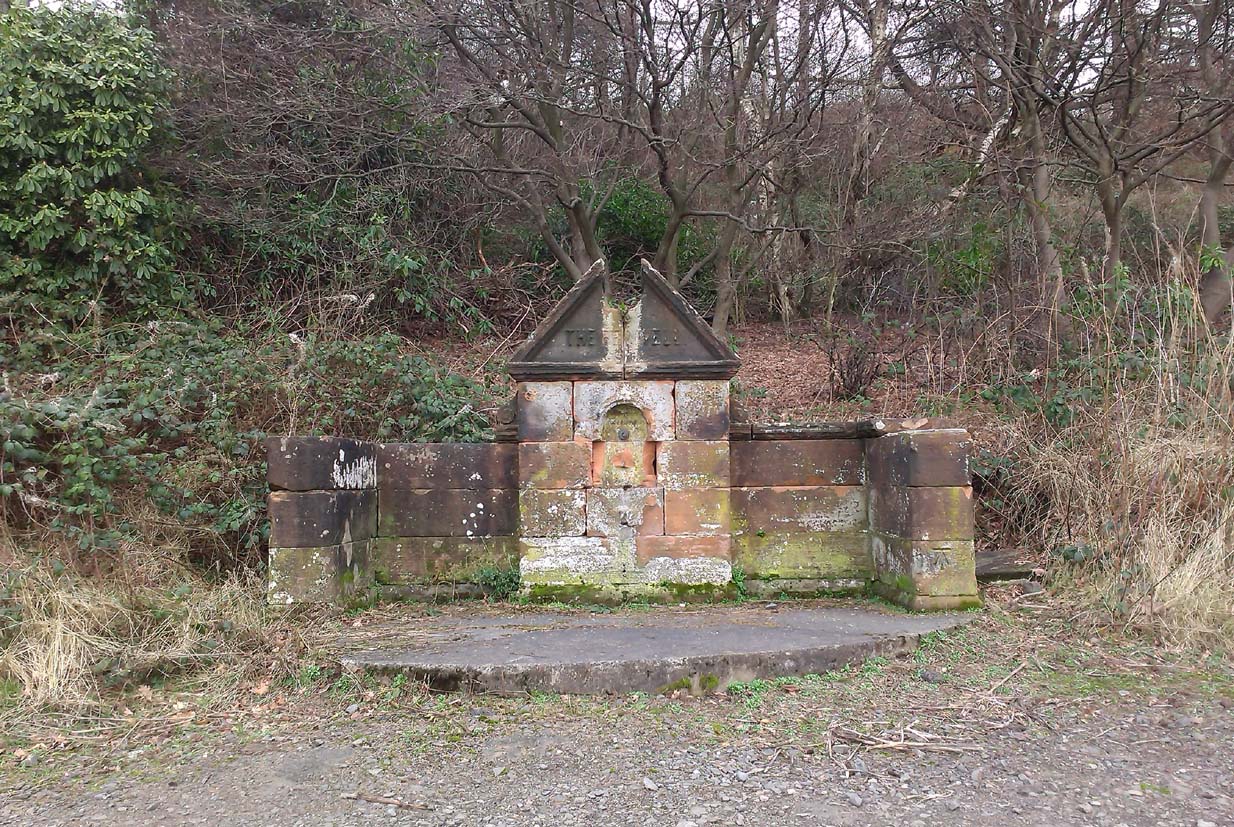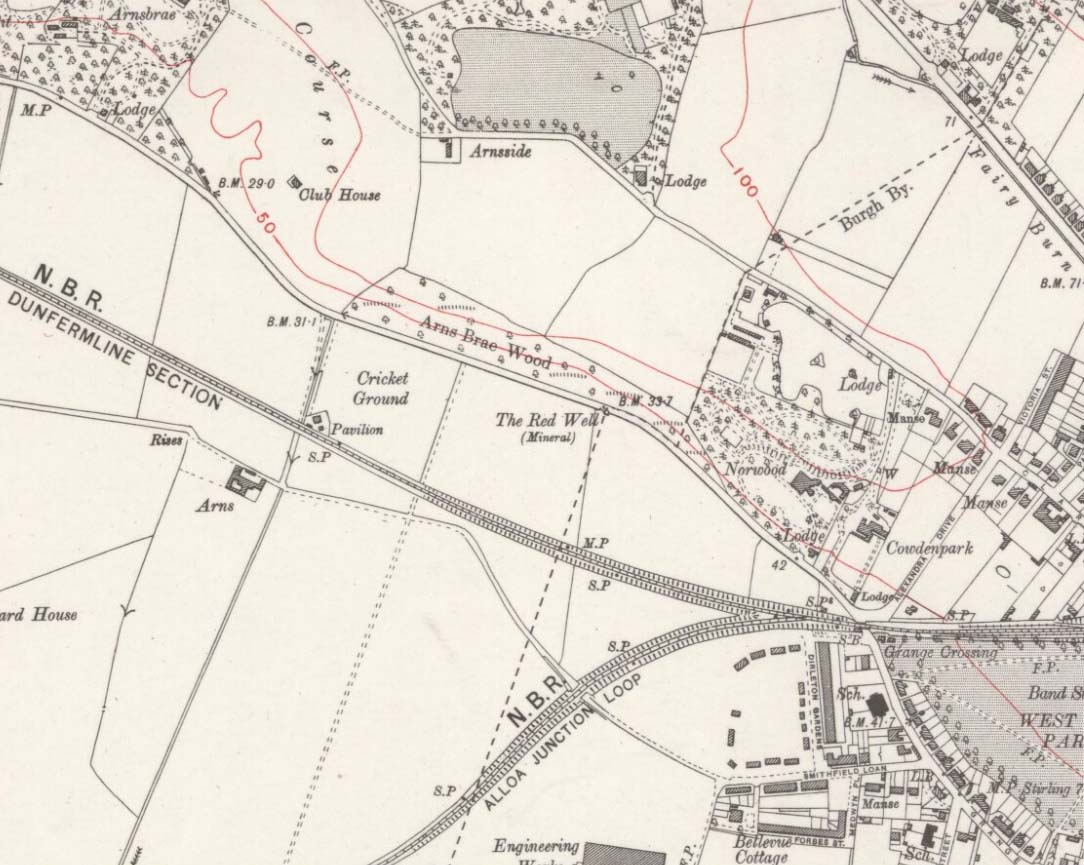Holy Well: OS Grid Reference – NS 86069 95324
Also Known as:
Along the A907 Stirling to Alloa road, turn onto the B9096 through Tullibody, turning up Menstrie Road until, on your right, you reach the old graveyard. Walk along the track past the old section and go into the new graveyard. The second pathway down, keep your eyes peeled on the floor and you’ll see it.
Archaeology & History
Just a flat carved stone laid in the expanded graveyard is all that remains to mark the site of this once sacred well. On it, the inscribed slab reads, “Site of the old Priest’s Well – 1905.”
In the 19th century when the waters were still used by local villagers, Robert Kirk (1890) wrote the following,
“Like the trees, we will now keep outside the dyke (round the old graveyard) and come to the Priest’s Well. This well, an adjunct of the ancient building, appears to be coeval with the Old Church, and lay a few yards south of the Parsonage, which was demolished at the Reformation. A small piece of ground in the immediate vicinity is known as the ‘Priest’s Croft’, and the adjacent field, tradition imagines to be the site of the original hamlet. When this well, from its proximity to the Churchyard, was condemned as unfit for human use, one old wife was heard to exclaim, “Na, na, I aye like a drink o’ the guid sweet priest.”
Despite being cited in the various Scottish holy wells reports, all mythic history of the site seems to have been forgotten.
References:
- Morris, Ruth & Frank, Scottish Healing Wells, Alethea Press: Sandy 1982.
- Kirk, Robert, Historical Sketch of Tullibody, Alloa 1890.
- Royal Commission on the Ancient & Historical Monuments, Scotland, Inventory of Monuments and Constructions in the Counties of Fife, Kinross and Clackmannan, HMSO: Edinburgh 1933.
- Simpkins, John Ewart, County Folklore – volume VII: Examples of Printed Folk-Lore Concerning Fife, with some Notes on Clackmannan and Kinross-Shires, Folk-Lore Society: London 1914.
- Walker, J. Russel, “Holy Wells in Scotland,” in Proceedings Society Antiquaries Scotland, volume 17, 1883.
© Paul Bennett, The Northern Antiquarian
